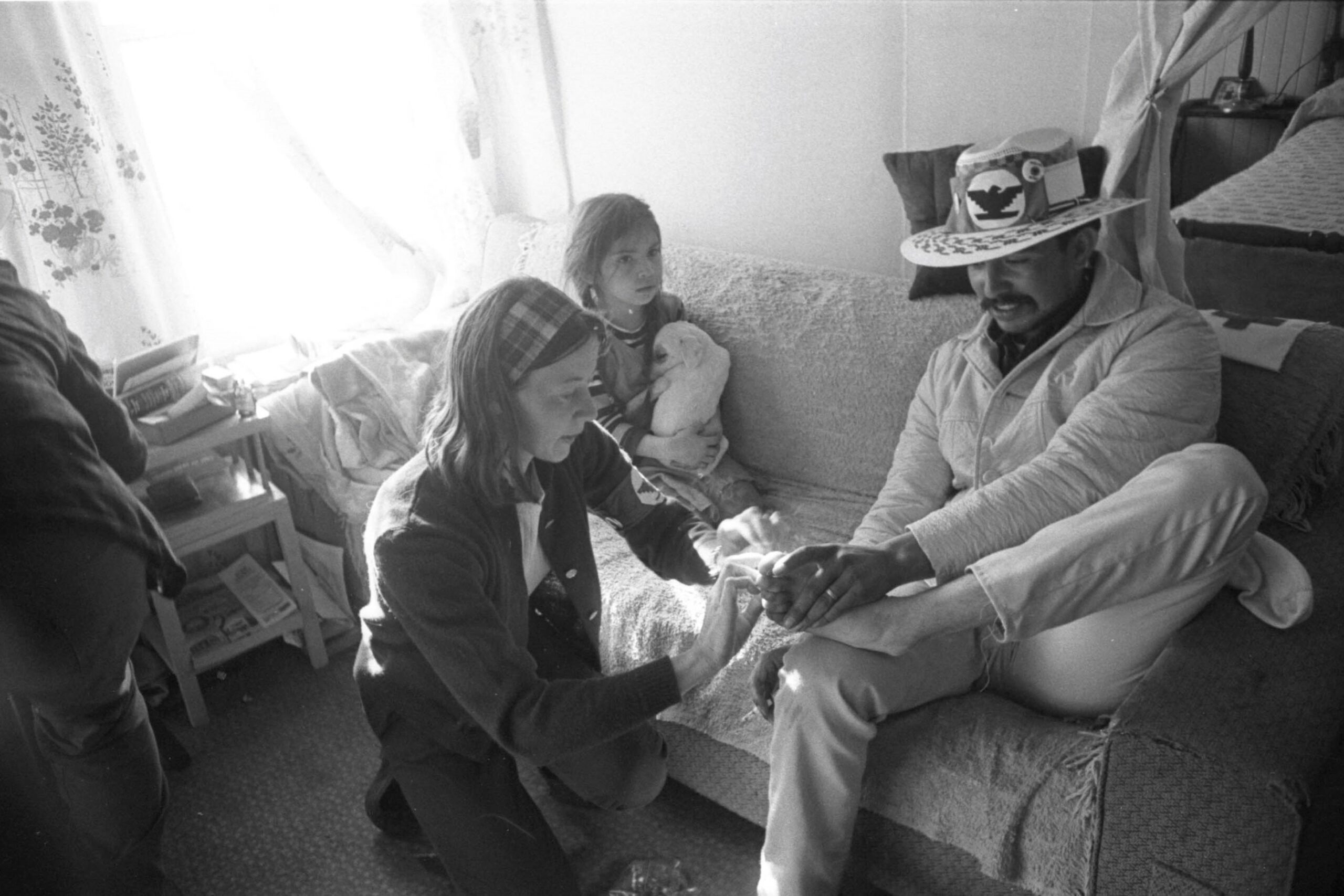March to Sacramento (on the road)
March to Sacramento (on the road)
Marchers walking on a dirt road during the march to Sacramento, 1966. Photo by John Kouns.
Marchers walking on a dirt road during the march to Sacramento, 1966. Photo by John Kouns.
Nurse Peggy McGivern inspects the feet of a marcher sitting inside a house during the march to Sacramento, 1966
The farmworkers who undertook the march to Sacramento were not expecting the toll walking all day took on their bodies, especially since many of them were working and organizing right up to the beginning of the march. Their feet became blistered and bloody, and others suffered from pulled and strained muscles. Nurse Peggy McGivern administered medical services throughout the march.
Marchers walk next to grape fields during the march to Sacramento, 1966. Photo by John Kouns.
Yolanda Barrera on Family, Music, and the Farmworker Movement (video)
Yolanda Barrera talks about her family’s involvement during the March to Sacramento in this clip. Her father and uncles played guitar, accordion, and drums while marching. She also talks about the physical toll the march took on their feet.
Tom & Ethel Bradley Center
California State University, Northridge
18111 Nordhoff Street, Northridge, CA 91330
Phone: (818) 677-1200 / Contact Us


